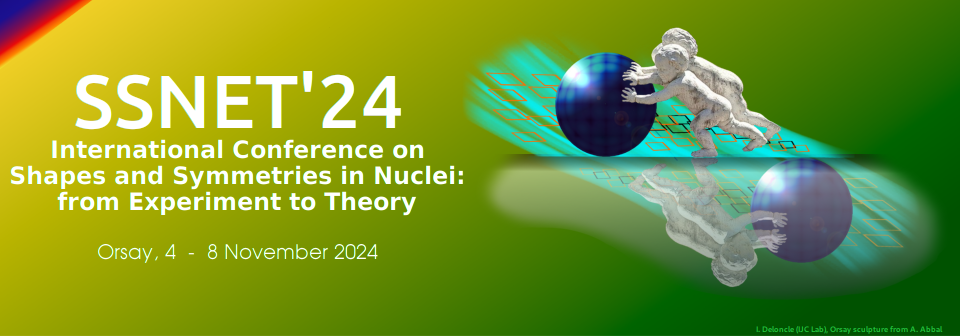Orateur
Description
Shape coexistence is a very important phenomenon that takes place in several regions of the nuclear chart. Among these regions, the isotopic chain of Krypton has been the subject of several experimental investigations and thus it can be considered as an excellent candidate to test the systematic behaviours of theoretical models. [1]
By going from the neutron deficient to more neutron rich Kr isotopes one observes a variety of shapes and trends that, still nowadays, represent a challenge for the most advanced theoretical models.
Among the various many-body methods, the Bohr Hamiltonian (BH) [2] based on microscopic Hartree-FockBogoliubov calculations is particularly interesting as it gives access to the position of low-lying excited states as well their electromagnetic transitions at a very low computational cost. This makes the BH an ideal method to perform large-scale calculations along the entire nuclear chart in order to identify global trends [3].
In my presentation, I will show some systematic calculations using various Gogny interactions in Kr isotopic chains. Identifying possible correlations among trends of low lying states and bulk properties of the effective interaction may be useful in order to include beyond mean field calculations within the adjustment protocol of effective nucleon-nucleon interactions.
[1] Nomura, K., and al., (2017). Structure of krypton isotopes within the interacting boson model derived from the Gogny energy density functional. Physical Review C 96(3): 034310.
[2] Próchniak, L., Rohozinski, S. G., (2009). Quadrupole collective states within the Bohr collective Hamiltonian. Journal of Physics G: Nuclear and particle physics, 36(12), 123101.
[3] Delaroche, J.P., and al. , (2010). Structure of even-even nuclei using a mapped collective Hamiltonian and the D1S Gogny interaction. Physical Review C, 81(1), p.014303.

